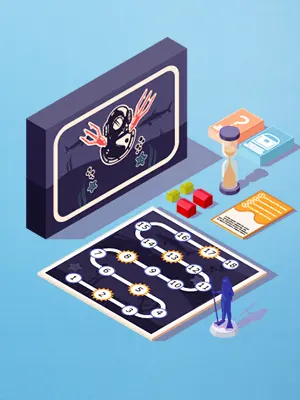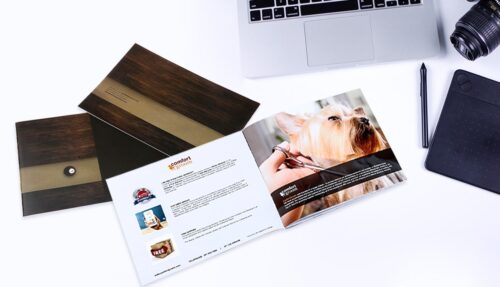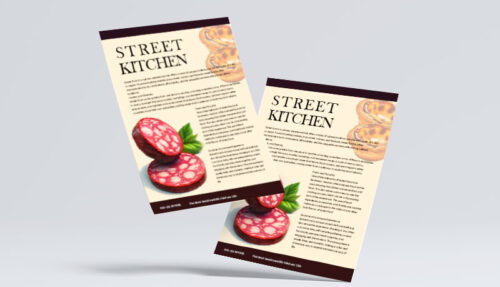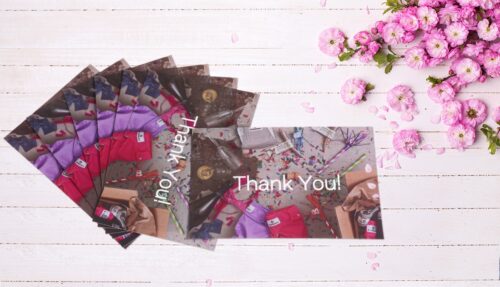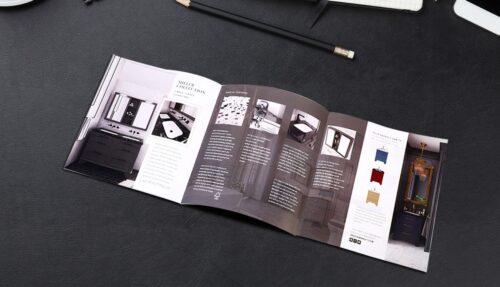We take you step-by-step through how to design, prepare, and print effective promotional leaflets for your marketing campaigns
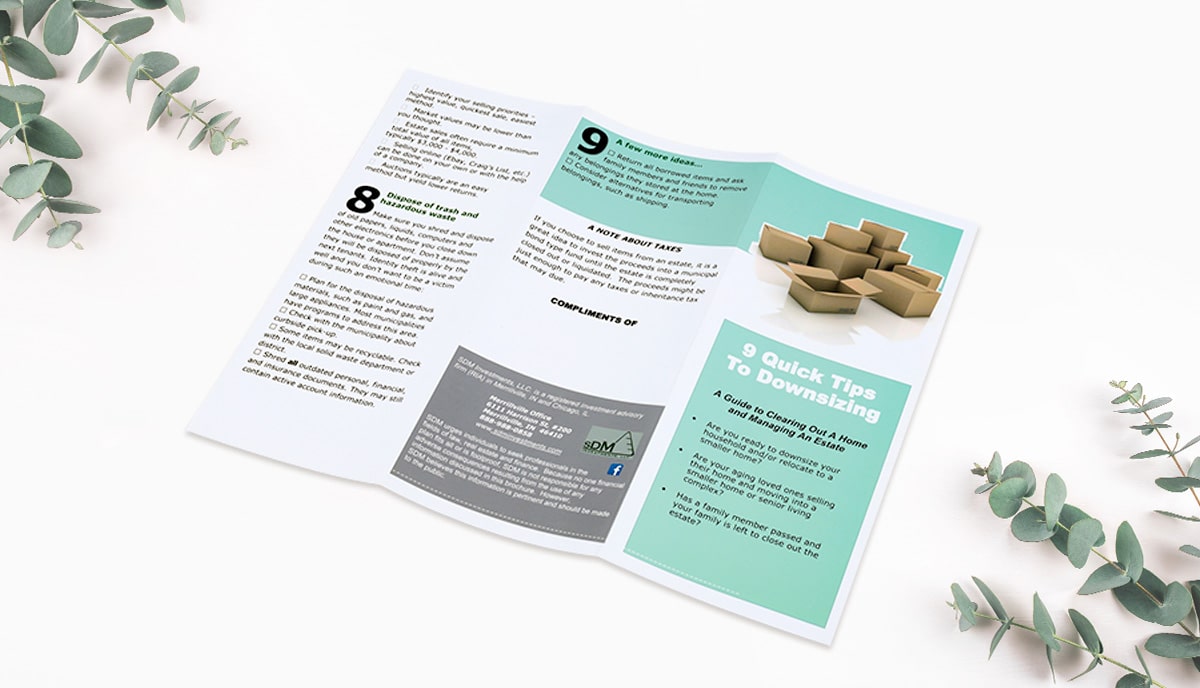
For marketing your business, product, or service, there are a lot of options available to you. One tried-and-true method is to create promotional leaflets and distribute them to potential customers. Leaflets are an effective way to reach a large audience with your marketing message, and when they’re designed well, they can be very eye-catching and informative.
There are many reasons businesses should print promotional leaflets with an offset printer. One reason is that it’s a cost-effective way to produce large quantities of high-quality prints. Offset printing also allows for more accurate color registration and delivers consistent results from print to print. Another advantage of using an offset printer for business promotion is that it offers a wide variety of customization options. You can choose from a variety of paper stocks, sizes, and finishes to create a look that is uniquely branded as your own.
If you’re planning to have your leaflets printed with an offset printer, there are a few things you need to keep in mind to ensure that your finished product is stunning and effective. In this article, we’ll walk you through the design process step by step, from start to finish. We also give you some tips on how to work with an offset printer to get the best possible results. We hope you’ll print your leaflets with us to take advantage of our 25 years’ success in the industry, our state-of-the-art printing technology, our expert and friendly team, and our dedication to personalized customer service. But the following steps will be helpful to you, whichever offset printer you choose.
Designing your leaflet for offset printing
To design an effective marketing leaflet, you should first consider your target audience and what you want to achieve with the leaflet. From there, you can choose an appropriate design and layout that will help you reach your goals. Keep in mind that your leaflet should be eye-catching and easy to read, so use clear and concise language and attractive visuals.
To create an effective promotional leaflet, there are a few key things you need to keep in mind at the outset:
- You need to come up with a catchy and attention-grabbing headline
- Next, you need to make sure that your content is clear and concise, and that all the important information is easy to find
- Finally, it’s important to pay attention to the layout and design of your leaflet, ensuring that it looks professional and communicates your brand messages and values
Before you design your leaflet, you need to decide what message you want to communicate. What are you trying to promote? What are the key points you want to get across? Once you know what you want to say, you can start thinking about the overall design of your leaflet.
Creating an effective headline
One of the most important aspects of any promotional leaflet is the headline. This is what will catch people’s attention and persuade them to read on. Unlike an online headline designed to show up in search engines, which should be obvious and informational, design a printed headline to catch people’s attention, arouse curiosity, and persuade them to read on. So, make sure that it’s catchy and interesting, and don’t be afraid to get creative!
Writing content for your promotional leaflet
When creating a promotional leaflet, it’s important to include content that will persuade people to take action. This content can include information about the product or service being advertised, special offers or discounts available, or simply why people should choose your company over the competition. Don’t forget to include a “call-to-action” — a sentence or brief paragraph that encourages your readers to take the next step.
Designing the layout of your promotional leaflet
Once you’ve written the content for your leaflet, it’s time to design the layout. This can be a fun process, but it’s important to be organized and make sure everything fits well together. The layout is important because it will determine how easy it is for people to read and understand your message. Keep in mind that people will usually only glance at a leaflet for a few seconds at first, so you need to make sure that your key points are easy to find and understand at a glance. That way, people are more likely to read on or keep the leaflet to look at again later.
With the actual design of your leaflet, less is often more. Use strong, simple images that represent your message clearly, and don’t be afraid to use white space to break up the text. Remember that people will often look at your leaflet from a distance when they first see it — in a rack or on a stand — so make sure the font is large enough to be readable.
A good layout will also help to highlight any special offers or deals that you’re promoting. You need to decide on a font and font size, as well as a color scheme that will complement the content. Don’t forget about the images you’ll be using — they should be of high quality and relevant to your leaflet’s topic.
Finally, it’s important to make sure all the files are print-ready before exporting them to the printing company. This means ensuring that you’ve aligned all the text is properly, that there are no spelling mistakes, and that all the images are at the correct resolution which, if you can’t export as vectors, should be at least 300 dpi.
Preparing your leaflet design for offset printing
If you want to produce a high-quality printed leaflet, you’ll need to create a PDF file which is ready for offset printing. This process can be a little tricky, so in this section, we’ll explain all the technical details you need to know in order to prepare your file correctly.
First, let’s look at what offset printing is and how it differs from other types of printing. Offset printing is a traditional printing method that uses metal plates to transfer an image onto paper via rubber rollers. The advantage of offset printing is that it produces high-quality prints with consistent color reproduction and sharp images unmatched by any other method. Because we run the plates multiple times, it’s more economical than some other printing methods when you need to print several hundred or several thousand copies, as is usually the case with a leaflet campaign.
In order to create a PDF file for offset printing, there are several things you need to keep in mind. The following tips can be helpful.
- The document needs to be formatted according to the specifications we give you. You should set the pages up as either portrait or landscape orientation, and the margins should be at least 0.5 inches on all sides. We can also give you a design template to work with to make the task easier.
- Place the images and text in your document within specific color spaces in order to ensure accurate reproduction when printed. As you may design in the RGB color space on your computer, transform your color space into CMYK before submission.
- You’ll need to add bleed margins, safe zones, and trim marks to your document before exporting it as a PDF.
Bleed is a printing term that refers to the part of the image that extends beyond the edge of the page. In order for the image to print correctly, you’ll need to add 0.125 inches on all sides of your document. Trim marks are used to show us where to cut the document down to size.
But don’t worry too much if some of this is unfamiliar to you. Just call us and we’ll be happy to explain it in simple terms and walk you through the process step by step. Once you’ve exported your PDF file, our in-house team will check it to make sure there are no errors. If we find errors, will tell you what they are, explain how to fix them, and offer you any additional support you may need.
How to get the best results from your offset printer
Once you’re happy with your design, it’s time to think about the printing process. Offset printing is a great option for leaflets because it’s affordable at quantity and is always top quality. When you’re working with an offset printer — hello, that’s us! — there are a few things you need to keep in mind to make sure that your finished product looks amazing. Here are a few helpful hints to make things easier for you:
- First, you need to provide us with high quality artwork. The better the quality of your artwork, the better the final print will look. Provide vector files if you can and if not, make sure that all images are at least 300 dpi if you’re exporting as bitmaps, for example.
- Next, you’ll need to choose the right paper stock. Don’t worry, we can help and advise you with this; but different paper stocks will affect the way your finished product looks. If you’re not sure which paper stock to choose, just ask us and will be delighted to send you samples through the mail at no extra charge.
- And finally, you’ll need to make sure that everything is set up correctly for printing. In most cases, this means a PDF file and vectors. Make sure you’ve embedded all fonts, and that you’ve specified the correct color space, safety zones, bleed, and trim.
By following these simple tips, you can design stunning promotional leaflets that are sure to grab attention. And when you work with a quality offset printer such as QinPrinting, you can be confident that your finished product will be of the highest possible quality.
Talk to us!
Here at QinPrinting we have over 25 years success in the offset printing industry. We continually update and use only the very latest, state-of-the-art technology; we’re committed to rigorous quality control protocols; and we have a genuine commitment to deliver personalized customer service. Our aim is to make high quality print products available to everyone, not just the big fish. You can get in touch with us by telephone, email, Skype, or our handy online contact form. We can’t wait to work with you!



